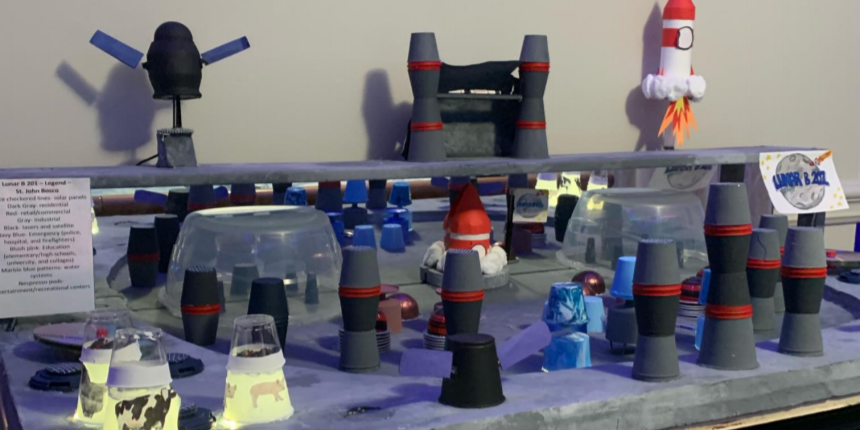

More than 1,000 students in Grades 6-8 from across Canada proudly showed off their visions for future cities on the Moon in the first Future City Experience Showcase, organized and hosted by Ontario Tech University on May 5.
Working in teams, students spent February through April using the engineering design process to research, plan, and build a scale model of a lunar city. They then presented their models during the virtual Showcase, where they met with a panel of engineering volunteers to present their designs, receive feedback, and have their future city ‘stamped’.
Launched in February 2021 as a Canadian pilot program, the Future City Experience is an abbreviated version of DiscoverE’s Future City Competition, which asks students to use the engineering design process to research, design, and build a scale model of a city 100 years into the future. The Future City Experience is intended for teachers and students who have never participated in the Future City Competition before and is designed to provide enhanced support to educators in creating positive engineering experiences for students through mentorship with engineers. In its inaugural year, the Future City Experience saw 1,544 students across Canada participate.
Engineers Canada partnered with Engineers of Tomorrow to recruit, train, pair, and support members of the engineering community who volunteered to serve as mentors for participating classrooms. In total, 97 volunteers were trained as Future City mentors, and they virtually visited their paired classrooms at least twice between February and April to connect with the students and help them design their lunar cities.
Engineers Canada had brought the Future City Competition to Canada in 2017, and launched the abbreviated Future City Experience this year. With the Future City Experience being offered for the first time this year, Future City programming saw many firsts in 2021. It was the first year that saw a collaborative effort between Engineers Canada, Engineers of Tomorrow, and Ontario Tech University to bring the program and the Showcase to life. It was also the first year that Future City programming was offered in both English and French. And it was the first year that the program went beyond traditional classrooms and saw homeschoolers participate by forming a team across Canada. Girl Guide groups also participated for the first time this year.
It was also the first year that Future City programming was offered entirely virtually as a result of the COVID pandemic. This shift to virtual programming, while challenging, also spurred innovative solutions.
When the pandemic led to a shift to at-home and online learning for many school boards across the country and students discovered they would no longer be able to access their physical city models, they innovated like aspiring engineers and figured out how to build their cities completely virtually using free open-source technology.
“The technical problem solving of this group has blown me away,” said Catherine, an Ontario educator. “They figured out how to put all their models into one file, textured it, and are rendering it at a render farm like a bunch of pros!”
“This has been a very challenging year for students and teachers across Canada who have been thrown into distance learning,” said Kim Bouffard, Engineers Canada’s Outreach Manager. “The students and teachers that participated demonstrated resilience and determination and I have been impressed and inspired by the students’ creativity and problem-solving skills; qualities we are looking for in our future engineers.”
Like any collaborative effort, the Future City Experience wouldn’t have been possible without the support of many organizations, volunteers, educators, and students.
“Engineers Canada extends its sincere appreciation to Engineers of Tomorrow and Ontario Tech University for partnering on this project,” added Bouffard. “We also owe a debt of gratitude to OIQ for providing translation support to francophone participants, and to our dozens of engineering volunteers who made classroom visits and who participated in our live Q&As to make this an unforgettable experience for the more than a thousand students who were inspired to think about what life would be like on the Moon.”


